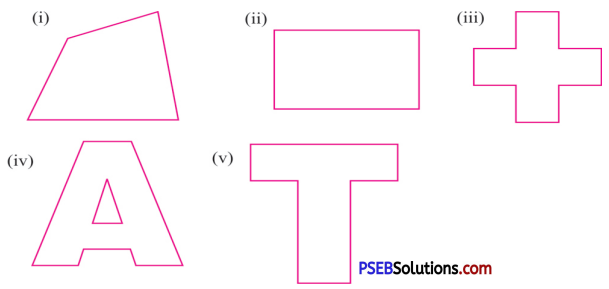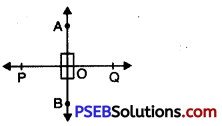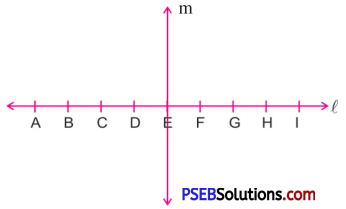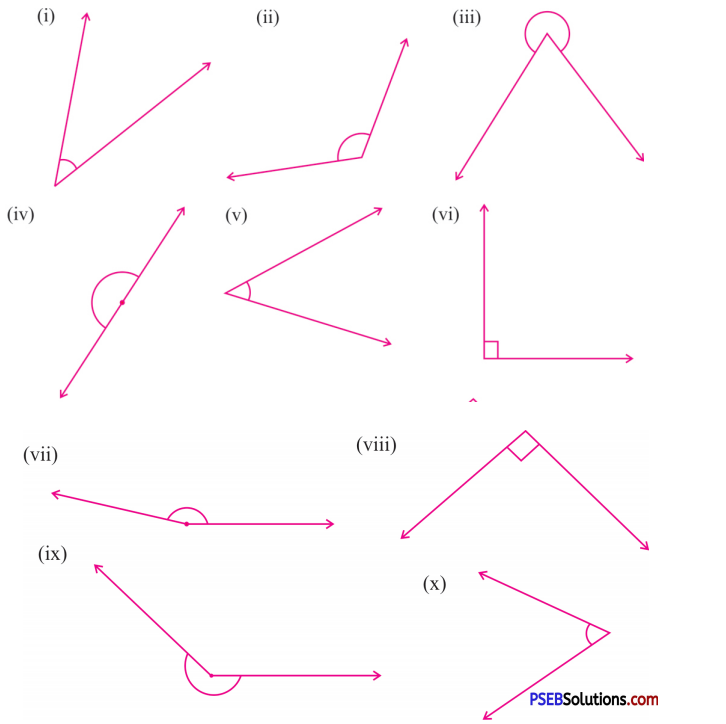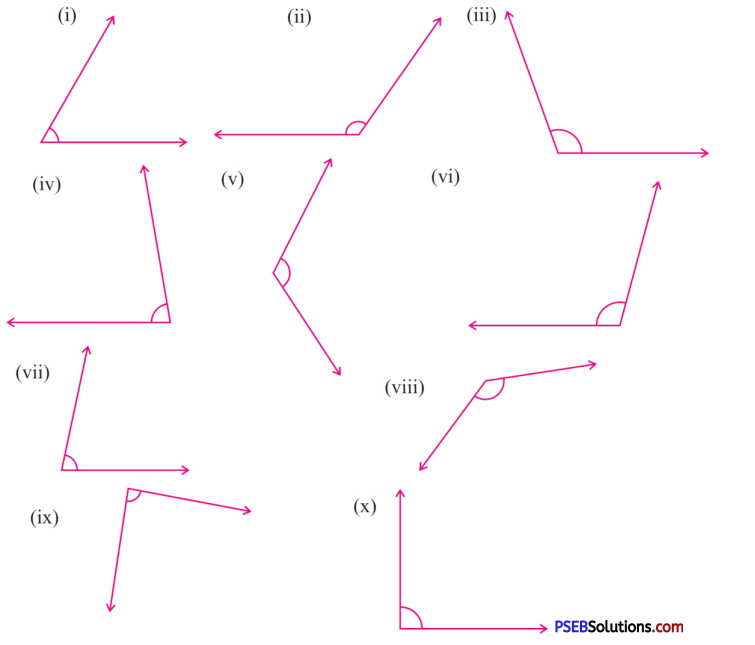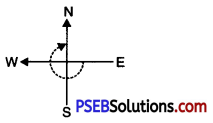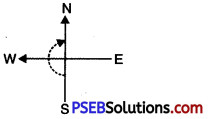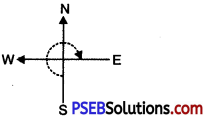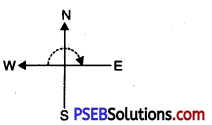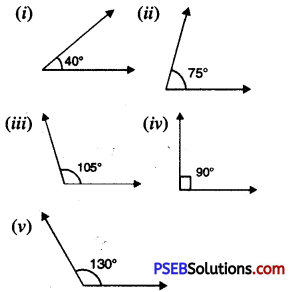Punjab State Board PSEB 6th Class Hindi Book Solutions Hindi Grammar Viram-Chinh विराम-चिह्न Exercise Questions and Answers, Notes.
PSEB 6th Class Hindi Grammar विराम-चिह्न
![]()
प्रश्न 1.
विराम चिल से क्या अभिप्राय है ? हिन्दी में प्रचलित चिह्न को स्पष्ट करें।
उत्तर:
बातचीत करते समय हम अपने भावों को स्पष्ट करने के लिए कहीं-कहीं ठहरते हैं। लिखने में भी ठहराव प्रकट करते हैं। ठहराव को प्रकट करने के लिए जो चिह्न लगाए जाते हैं, वे विराम चिह्न कहलाते हैं।
मुख्य विराम चिह्न
1. पूर्ण विराम (।) :
(क) हर वाक्य के अन्त में लगाया जाता है। जैसे-गोपाल आठवीं कक्षा में पढ़ता है।
(ख) कविता में वाक्य की पूर्णता-अपूर्णता नहीं देखी जाती। इसका प्रयोग पद या पंक्ति के अन्त में किया जाता है।
2. अल्प-विराम-(,) : बोलने वाला जहाँ बहुत थोड़ी देर के लिए रुकता है, वहाँ अल्प-विराम लगता है; जैसे-मैं, कमला और गीता कल मन्दिर जाएंगी।
3. प्रश्न-सूचक चिह्न-(?) : प्रश्न-सूचक वाक्य के अन्त में प्रश्न-सूचक चिह्न लगाया जाता है; जैसे-इस समय भारत के प्रधानमन्त्री कौन हैं ?
4. उद्धरण चिह्न-(“”) : किसी के कथन को उसी रूप में दिखाने के लिए उद्धरण चिह्न लगाया जाता है; जैसे-महात्मा गांधी जी ने कहा था, “सच्चाई की अन्त में विजय होती है।”
5. विस्मयादि बोधक चिहन-(!) : विस्मयादि बोधक चिह्न अव्ययों के बाद लगते हैं; जैसे- अहो! हाय! आदि।
6. निर्देशक-(-) : इसका प्रयोग कथोपकथन (बातचीत) में बोलने वाले के नाम के आगे आता है। माता-पुत्र! इधर आओ, मेरी बात सुनो। आचार्य-बालको! भारत को कब आज़ादी मिली थी ?
7. योजक-(-) : दो शब्दों को जोड़ने के लिए योजक चिहन का प्रयोग होता है; जैसे-माता-पिता की सेवा करो।
8. कोष्ठक चिह्न-() :
(क) किसी शब्द के अर्थ को स्पष्ट करने के लिए कोष्ठक चिहन का प्रयोग होता है; जैसे- क्या तुम मेरे कहने का तात्पर्य (मतलब) समझ गए ?
(ख) विभाग सूचक अंक या अक्षरों के लिए भी इसी चिह्न का प्रयोग होता है; जैसेसंज्ञा के तीन भेद हैं-(1) व्यक्तिवाचक (2) जातिवाचक और (3) भाववाचक।
9. लाघव चिह्न-(०) : जहाँ शब्द को पूरा न लिखकर उसका संक्षिप्त रूप लिन दिया जाए वहाँ लाघव चिह्न का प्रयोग होता है; जैसे-लाला लाजपत राय-ला० लाजपत राय लिखा जाता है। पंडित जवाहर लाल नेहरू-पं० जवाहर लाल नेहरू लिखा जाता है।
![]()
नीचे लिखे वाक्यों में उचित विराम चिह्न लगाएँ
प्रश्न 1.
(1) राजा ने कहा आप थक गए हैं
(2) राजा ने कहा मैं तुम्हें जानता भी नहीं फिर तुमने कोई अपराध भी नहीं किया जिसके लिए मैं तुम्हें क्षमा करूँ
(3) साधु ने कहा देखो कोई दौड़ा हुआ यहाँ आ रहा है आओ उसे देखें
(4) तुम मुझे नहीं जानते लेकिन मैं तुम्हें जानता हूँ
उत्तर:
(1) राजा ने कहा, “आप थक गए हैं।”
(2) राजा ने कहा मैं तुम्हें जानता भी नहीं फिर तुमने कोई अपराध भी नहीं किया जिसके लिए मैं तुम्हें क्षमा करूँ
(3) साधु ने कहा देखो कोई दौड़ा हुआ यहाँ आ रहा है आओ उसे देखें
(4) तुम मुझे नहीं जानते लेकिन मैं तुम्हें जानता हूँ
निम्नलिखित में उचित विराम चिह्न लगाएँ
प्रश्न (1)
मित्र कैसा अद्भुत खेल है क्या जीवन भी एक खेल के समान है थोड़ा सोचकर बताना।
उत्तर:
“मित्र, कैसा अद्भुत खेल है ? क्या जीवन भी एक खेल के समान है ? थोड़ा सोच कर बताना।”
प्रश्न (2)
उसने पुस्तकें कापियां तथा कुछ अन्य सामान खरीदा सामान को थैले में डालकर दुकानदार से पूछा कितने पैसे दूं
उत्तर:
उसने पुस्तकें, कापियां तथा कुछ अन्य सामान खरीदा; सामान को थैले में डालकर दुकानदार से पूछा, “कितने पैसे दूँ ?”
प्रश्न (3)
मेरे मित्र दौड़ कर आओ यह देखो कितना सुन्दर फूल खिला है इसे तोड़ना मत मित्र ने मुझसे कहा
उत्तर:
“मेरे मित्र! दौड़ कर आओ। यह देखो कितना सुन्दर फूल खिला है। इसे तोड़ना मत।”-मित्र ने मुझसे कहा।
प्रश्न (4)
पिता, पुत्र तथा पुत्री तीनों एक साथ बोले क्या गाड़ी अभी तक नहीं आई नहीं आई मैं उत्तर में बोला
उत्तर:
पिता पुत्र तथा पुत्री-तीनों एक साथ बोले, “क्या गाड़ी अभी तक नहीं आई ?” “नहीं आई” मैं उत्तर में बोला।
![]()
प्रश्न (5)
संजय ने पापा से पूछा पापा यह फसल कहीं कहीं से क्यों कटी हुई है
उत्तर:
संजय ने पापा से पूछा, “पापा, यह फसल कहीं-कहीं से क्यों कटी हुई है ?”
प्रश्न (6)
मुझे आते देख पिता जी बोले बेटी तैयार नहीं हुई देर न कर वे लोग आध-पौन घंटे तक आने वाले हैं
उत्तर:
मुझे आते देख, पिता जी बोले, “बेटी, तैयार नहीं हुई। देर न कर, वे लोग आध-पौन घंटे तक आने वाले हैं।”
प्रश्न (7)
माँ तुम रो क्यों रही हो क्या तुम्हें अपने किए पर दुःख है राकेश ने प्रश्न किया
उत्तर:
“माँ, तुम रो क्यों रही हो ? क्या तुम्हें अपने किए पर दुःख है?” राकेश ने प्रश्न किया।
प्रश्न (8)
स्वामी रामतीर्थ एक कवि दार्शनिक सन्त देशभक्त तथा समाज सुधारक थे
उत्तर:
स्वामी रामतीर्थ एक कवि, दार्शनिक, सन्त, देशभक्त तथा समाज सुधारक थे।

